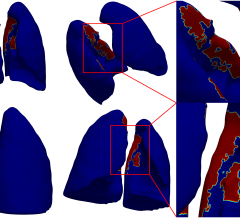April 30, 2013 — Better outcomes can be achieved for prostate cancer patients by using brachytherapy, a highly targeted form of radiotherapy, compared to surgery, says the finding of a new clinical study conducted by Panaxea International, University of Twente, the Netherlands.[1] The study, presented at the European Society for Radiotherapy and Oncology (ESTRO) in April, used the latest cost-effectiveness model to look at relevant recent data for prostate cancer. The study analyzed research findings from six recent overview studies involving 55,000 patients, and looked at disease progression, associated costs and outcomes extrapolated over a 10-year time horizon from a U.K. National Health Service (NHS) cost perspective. The study authors found that in patients where the prostate cancer remains localized, brachytherapy is more cost-effective and, importantly, offers better quality of life outcomes — either when used alone in low-risk patients where active surveillance is not favored or in combination with external beam radiation therapy (EBRT) for higher-risk patients.[1]
Brachytherapy is a highly targeted form of radiotherapy where a radiation source is placed inside or next to the area that requires treatment. By doing so, it reduces the risk of unnecessary damage to healthy tissue and organs, and reduces side effects such as incontinence and erectile dysfunction. [2] Brachytherapy is underused in the United Kingdom, where only 4 to 5 percent of patients are treated with it, compared to 8 percent in Germany and 25 percent in the United States.[3]
Around 50 percent of prostate cancer patients in the United Kingdom are treated using surgery[4], which is associated with an increased risk of incontinence and impotence compared to radiotherapy treatments.[2] Despite the increased risk, more younger men choose surgery over radiotherapy, with studies showing that this treatment choice is influenced by the patient's first consultation with their doctor.[2]
"Prostate cancer is the most common cancer in men[5], and U.K. survival rates are lower than in comparable countries such as Norway and Sweden[6]," said Lotte Steuten, associate professor of health technology assessment at University of Twente and the lead author of the study. "Brachytherapy is offered as an outpatient procedure, which means it has shorter recovery time than surgery, and our findings reflect that it is more cost-effective.[1] We would urge all practitioners involved in the care of people with prostate cancer to consider these results and how they can achieve the best outcomes for their patients as well as cost-effectiveness for the healthcare system compared to other treatments excluding active surveillance."
Dr. Christine Elwell, consultant oncologist at Northampton General Hospital in Northampton, U.K., said, "In the past 20 years we have made huge strides in prostate cancer survival. But we can't and shouldn't lose sight of quality of life. This long-term analysis joins a growing body of evidence that brachytherapy should be considered in more cases and can improve outcomes."
The study was funded by a research grant provided by Elekta.
For more information: www.elekta.com
References:
1. Steuten LMG. "Comparative cost / QALY of guideline-recommended prostate cancer treatments: a UK cost perspective." PD 0371; 2nd ESTRO Forum, Geneva, Switzerland 2013.
2. Prescrire Int. 2012 Oct;21(131):242-8.
3. Guedea F et al, Radiother. Onc. 2007; 82: 50-54
4. Buron C et al, Int J Radiat Oncol Biol Phys 2007;67(3):812-22.
5. Prostate Cancer UK Available at: http://prostatecanceruk.org/information/prostate-cancer-facts-and-figur… [last accessed March 2013]
6. A comparison of prostate cancer survival in England, Norway, Sweden www.ncin.org.uk/view.aspx?rid=284 [last accessed March 2013]


 December 04, 2025
December 04, 2025 









